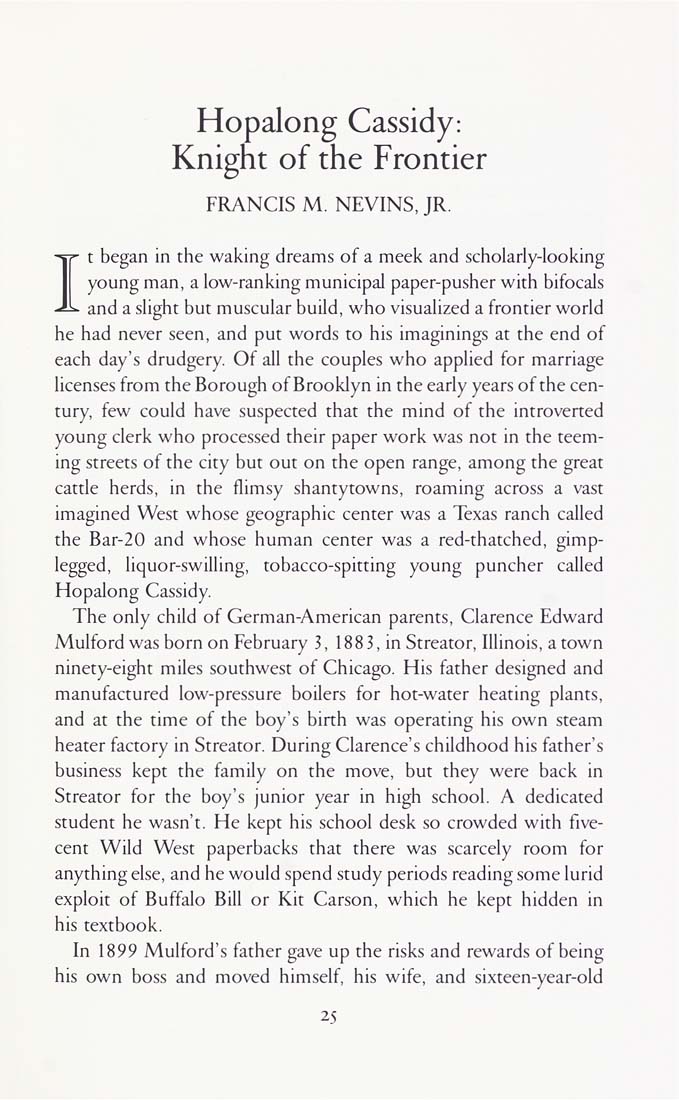Columbia Library columns (v.36(1986Nov-1987May))
(New York : Friends of the Columbia Libraries. )
|
||
|
|
|
|
| v.36,no.2(1987:Feb): Page 25 |

Hopalong Cassidy: Knight of the Frontier FRANCIS M. NEVINS, JR. It began in the waking dreams of a meek and scholarly-looking young man, a low-ranking municipal paper-pusher with bifocals and a slight but muscular build, who visualized a frontier world he had never seen, and put words to his imaginings at the end of each day's drudgery. Of all the couples who applied for marriage licenses from the Borough of Brooklyn in the early years ofthe cen¬ tury, few could have suspected that the mind of the introverted young clerk who processed their paper work was not in the teem¬ ing streets of the city but out on the open range, among the great cattle herds, in the flimsy shantytowns, roaming across a vast imagined West whose geographic center was a Texas ranch called the Bar-20 and whose human center was a red-thatched, gimp- legged, liquor-swilling, tobacco-spitting young puncher called Hopalong Cassidy. The only child of German-American parents, Clarence Edward Mulford was born on February 3, 1883, in Streator, Illinois, a town ninety-eight miles southwest of Chicago. His father designed and manufactured low-pressure boilers for hot-water heating plants, and at the time of the boy's birth was operating his own steam heater factory in Streator. During Clarence's childhood his father's business kept the family on the move, but they were back in Streator for the boy's junior year in high school. A dedicated student he wasn't. He kept his school desk so crowded with five- cent Wild West paperbacks that there was scarcely room for anything else, and he would spend study periods reading some lurid exploit of Buffalo Bill or Kit Carson, which he kept hidden in his textbook. In 1899 Mulford's father gave up the risks and rewards of being his own boss and moved himself, his wife, and sixteen-year-old 25 |
| v.36,no.2(1987:Feb): Page 25 |







